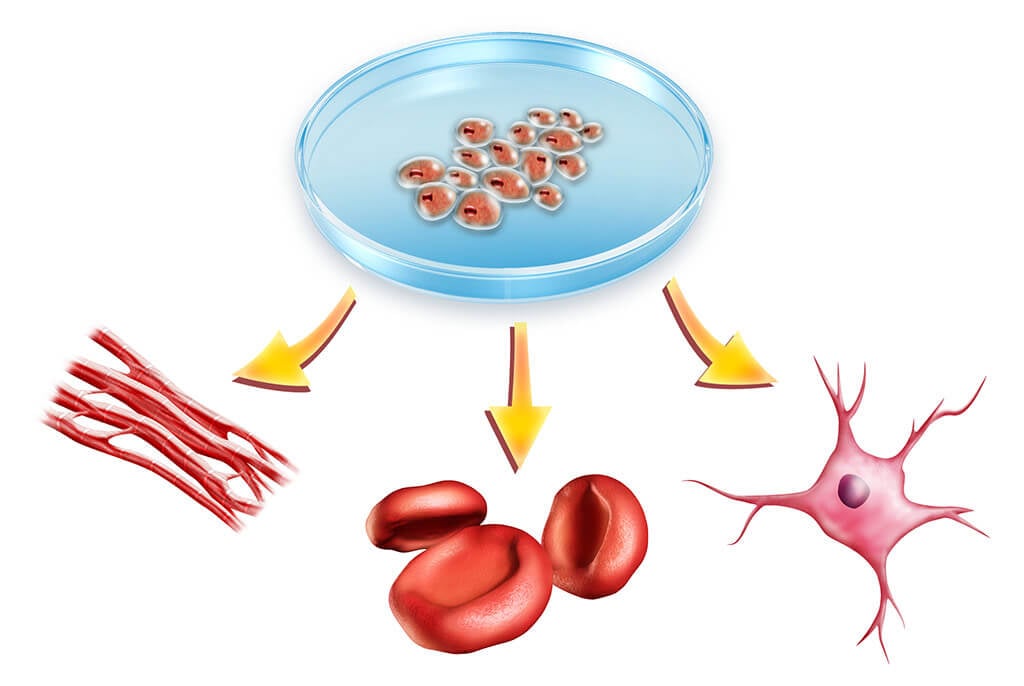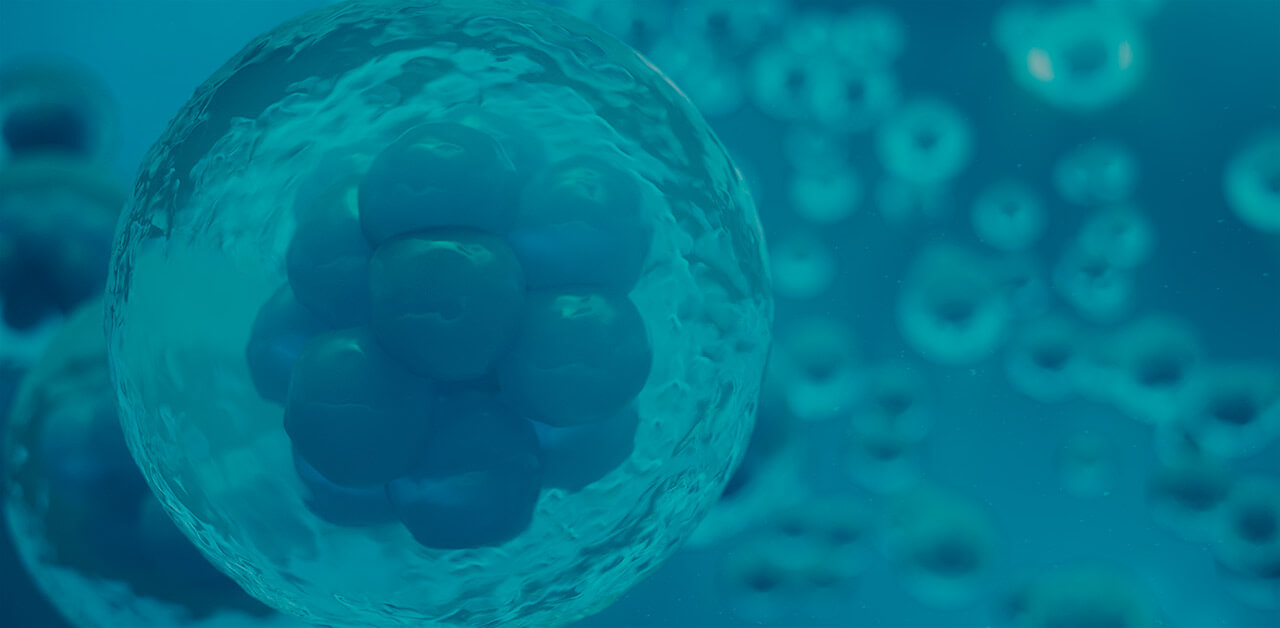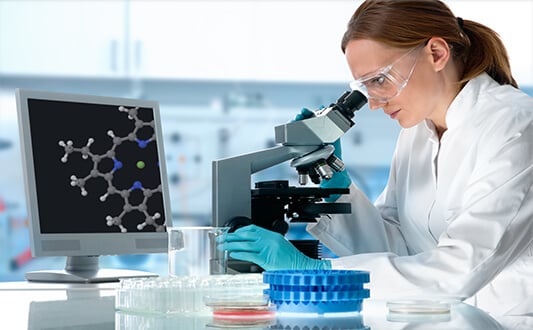Regenerative cell medicine uses stem cells (SCs) to repair damaged bone marrow, nerve tissue, the musculoskeletal system, or to generally rejuvenate a person. With careful harvesting and processing in laboratory conditions, SCs can become the source of most types of differentiated cells in an adult organism. The leading clinics in the world use regenerative cell therapy to sparingly treat pathologies that require surgery or are considered incurable.
Sources of stem cells
At the stage of stem cell therapy planning, the doctor selects the most suitable source of donor material. This can be:
- Red bone marrow of the patient or HLA-compatible donor
- Peripheral blood of the patient or HLA-compatible donor
- Cord blood
Red bone marrow is a source of pluripotent stem cells (PSCs). PSCs form several types of cells within the same type of tissue. For example, with appropriate stimulation, PSCs can form red blood cells, white blood cells, or platelets.
Peripheral blood contains less stem cells than red bone marrow. However, using hardware-based filtering, it is possible to collect the required amount of material from the blood. Prior to the procedure, the donor receives an injection of growth factor, which stimulates the proliferation of stem cells and their exit from the red bone marrow into the bloodstream.
Cord blood of newborns contains multipotent stem cells that give rise to all kinds of tissues of the human body. These are the most promising types of postnatal SCs. Indeed, prenatal (embryonic) stem cells are able to differentiate even more widely, but the use of embryos is limited for ethical reasons.

Treatment of hematological diseases and cancer
Hematopoietic stem cells are used to treat primary (genetically determined) and secondary (acquired throughout life) immunodeficiency conditions . They make up for the damaged links of cellular and humoral immunity. Hematopoietic SCs are also effective in treating refractory and hereditary anemia.
When transplanting hematopoietic SCs from a donor, a graft-versus-host disease is additionally prevented. A modern prophylactic regimen involves the prescription of cyclosporin A or tacrolimus, in combination with methotrexate or mycophenolate mofetil.
Treatment of joint diseases
Stem cells are successfully used for the treatment of inflammatory and degenerative joint diseases (for example, osteoarthritis), as well as for injuries of the musculoskeletal system, including for sports and occupational injuries. Due to the polypotency, SCs can be used for:
- Tendon and ligament restoration
- Articular cartilage restoration
- Bone restoration
When restoring tendons and ligaments , SCs are fixed on biological scaffolds with a native extracellular matrix. Such scaffolds support the viability of cells and contribute to their dispersion along the surface of the tendon and fixation on the damaged areas.
Articular cartilage can usually be restored, due to the patient’s own chondrocytes. A small number of chondrocytes are harvested from the patient’s healthy joint (for example, from the knee joint) during an arthroscopic procedure. After this, the cells are multiplied in a laboratory, are activated, and then injected back into the affected joint.
With the use of embryonic SCs, bone tissue regenerates faster, since they can give rise to both new bone and the blood vessels that feed it. However, with additional stimulation with paracrine factors, the cells obtained from the blood of adult donors can be used as well.
Treatment of degenerative diseases of the nervous system
The techniques of regenerative cell therapy are used to restore dopamine-producing neurons, which cause the damage that forms the basis of Parkinson's disease . To improve the safety profile of the procedure, the pluripotent stem cells are isolated from the patient’s own skin or blood. The obtained cells are reprogrammed in the laboratory using genetic engineering techniques and then implanted back into the brain.
When treating a stroke, SCs are used to restore neurons damaged due to hypoxia (ischemic stroke) or hemorrhage (hemorrhagic stroke), as well as to stimulate the growth of new blood vessels. To this end, doctors use donor nerve stem cells or drugs that stimulate the proliferation of the patient’s own nerve SCs.
Stem cell treatment in foreign clinics with Booking Health
With Booking Health , the selection of a regenerative cell therapy technique and specialized medical facility is easier and more reliable. Booking Health will provide you with information about all the hospitals that use stem cell therapy in their clinical practice. In particular, such therapy is successfully carried out by the Clinic of Advanced Biological Medicine in Frankfurt-am-Main . The average cost of stem cell treatment in the Department of Alternative Medicine is €23,255.
Booking Health is a medical tourism provider and can help you with the following important issues:
- selection of the right clinic, based on an annual qualification profile;
- direct communication with your attending physician;
- preliminary preparation of a treatment program, without repeating previous examinations;
- provision of favorable costs of clinic services, without overpricing and additional coefficients for foreign patients (saving up to 50%);
- booking an appointment with a doctor on your desired date;
- monitoring the medical program at all its stages;
- insurance against an increase in the cost of treatment, in case of complications (а coverage of €200,000, valid for 4 years);
- assistance in buying and forwarding medicines;
- communication with the clinic after the treatment is complete;
- control of invoices and return of unspent funds;
- organization of additional diagnostic tests;
- top-class service: booking hotels, airline tickets, and transfers.
Authors:
This article was edited by medical experts, board-certified doctors Dr. Nadezhda Ivanisova, and Dr. Bohdan Mykhalniuk. For the treatment of the conditions referred to in the article, you must consult a doctor; the information in the article is not intended for self-medication!
Our editorial policy, which details our commitment to accuracy and transparency, is available here. Click this link to review our policies.
Sources:
Cancer Treatment Centers of America
National Center for Biotechnology
Read:
Why Booking Health - questions and answers
How to make right decision when choosing the clinic and specialist
7 reasons to trust to the rating of clinics on the Booking Health portal







